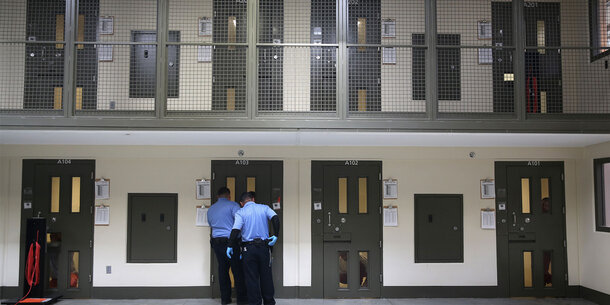Since peaking at over 1.5 million people in 2009, the U.S. prison population has declined, but at the achingly slow pace of approximately 1 percent annually. At this rate, it will take until nearly the end of the century to get back to the incarceration levels of the late 1980s.
What’s the holdup? I’m going to let you in on one of the dirty little secrets of our criminal justice system: It pays to punish. A new Brennan Center report dives deeply into the perverse financial incentives that drive excessive punishment at all levels of the system. The result is mass incarceration and a heavy financial burden on those least able to pay.
The examples of perverse financial incentives are many. Some local governments, for example, collect fees for acting as intermediaries between the federal government and for-profit detention facilities. Others build or expand their own public jails to provide overflow space for people detained by ICE or the U.S. Marshals Service, which provide the added financial boon of paying for those beds at a higher rate than what the jails receive for those incarcerated by the county.
Local governments have also overindulged in fines and fees, sometimes building budgets around them. Excessive financial penalties needlessly entangle poor people in the criminal justice system. Worse, unnecessary interactions between police and citizens — driven by pressure to raise revenue rather than improve public safety — create situations in which miscommunication or poor decision making can lead to tragedy. The most notorious example of “user-funded justice” came to light in the wake of the killing of Michael Brown in Ferguson, Missouri, where state law permits local governments to source a shocking 20 percent of their revenue from fines and fees.
Civil asset forfeiture, originally intended to strip ill-gotten gains from drug kingpins, is another problem. Law enforcement agencies now seize cash, vehicles, and even homes on a mere suspicion that the property was connected to a crime. The process has led to the appearance, and sometimes the reality, of corruption. An investigation revealed that Minnesota’s Metro Gang Strike Force stopped and searched people who were clearly not involved in gang activity and then allowed the officers’ families to borrow or buy seized televisions, tools, appliances, and jet skis.
This system of perverse financial incentives burdens people of color especially heavily. Black and Latino people are disproportionately represented in cities and towns that rely on fines and fees for revenue. According to a 2019 study, arrests of Black and Latino people are more likely to be associated with increased forfeiture revenue than arrests of white people.
Chasing revenue distracts law enforcement from its core mission: protecting the public and solving crimes. A 2020 study found that an increase in the share of revenue from fines, fees, and forfeitures, was associated with decreases in clearance rates for both violent and property crimes.
Incarceration and financial penalties should not be used as solutions to budget shortfalls of agencies and local governments. If we are to solve the problem of excessive punishment, we will have to address the role that financial incentives play in maintaining the status quo.









